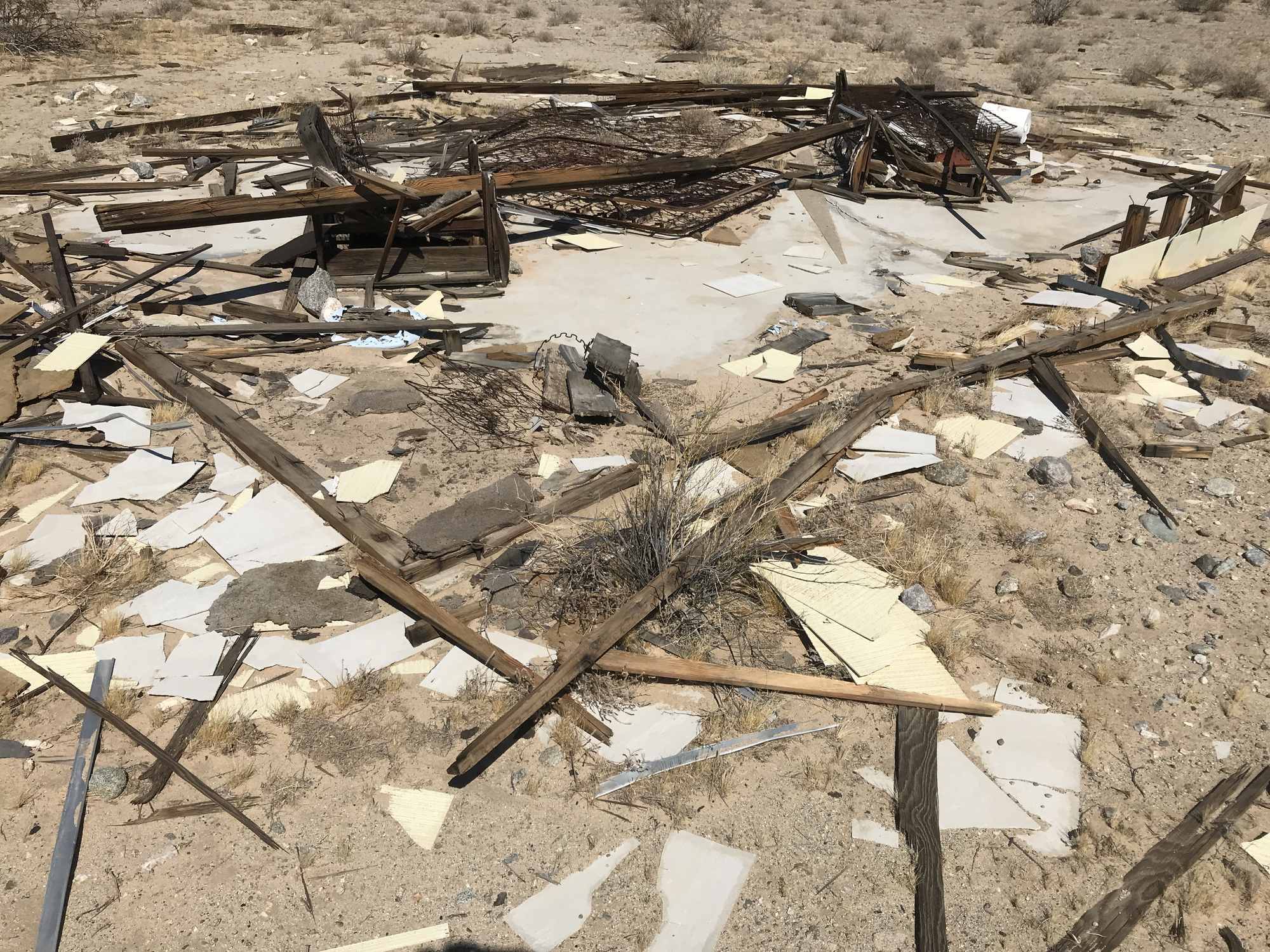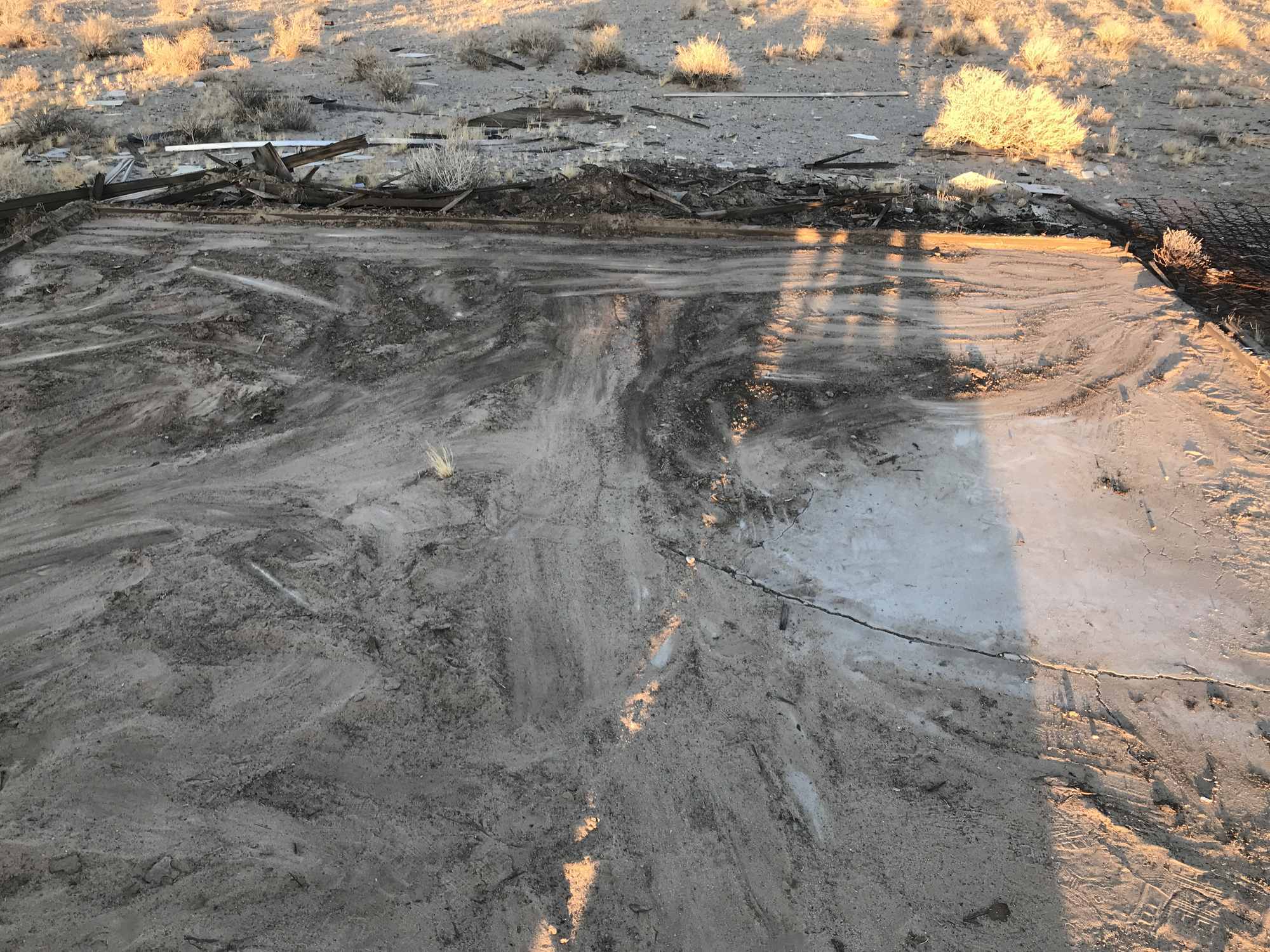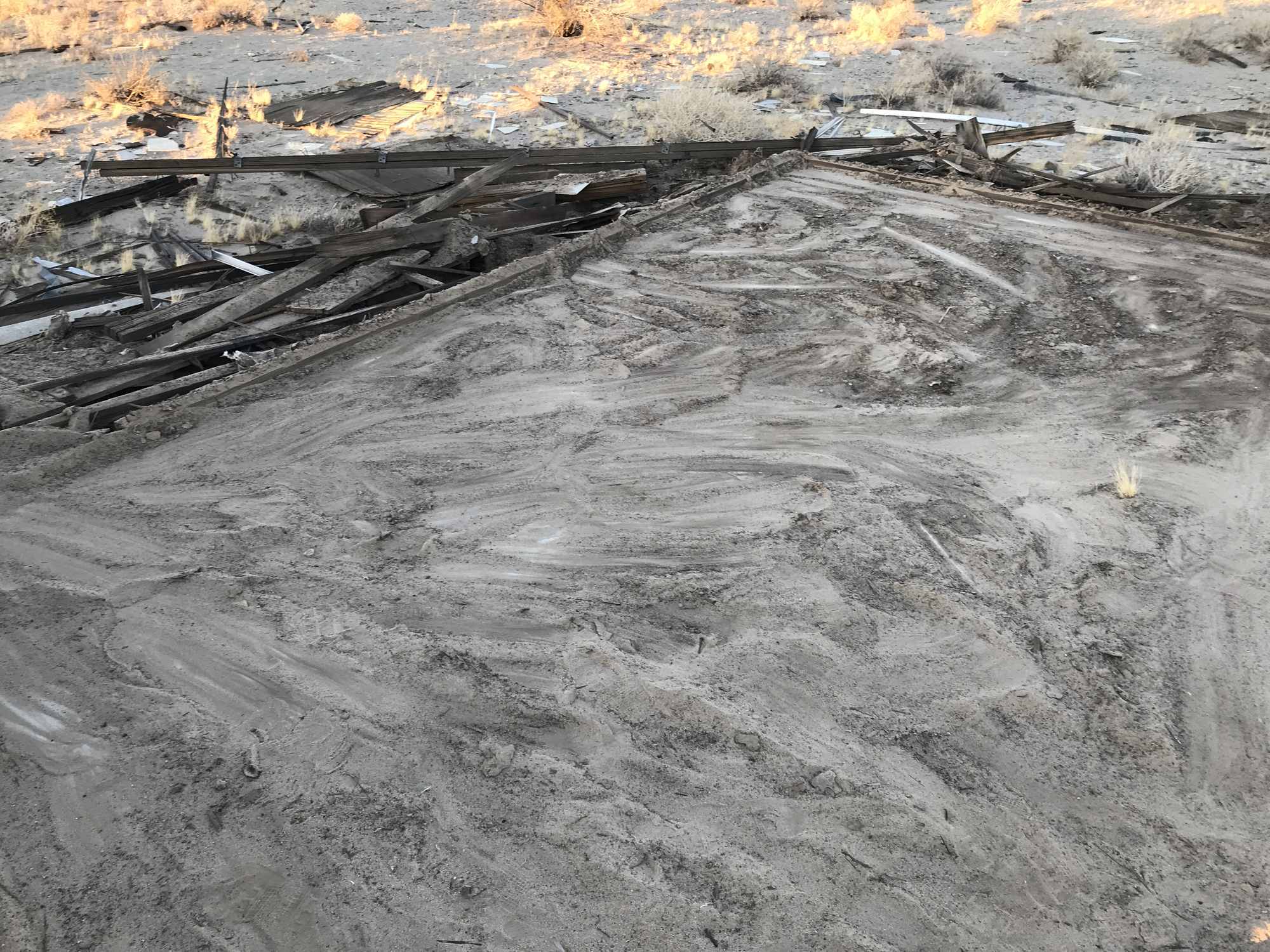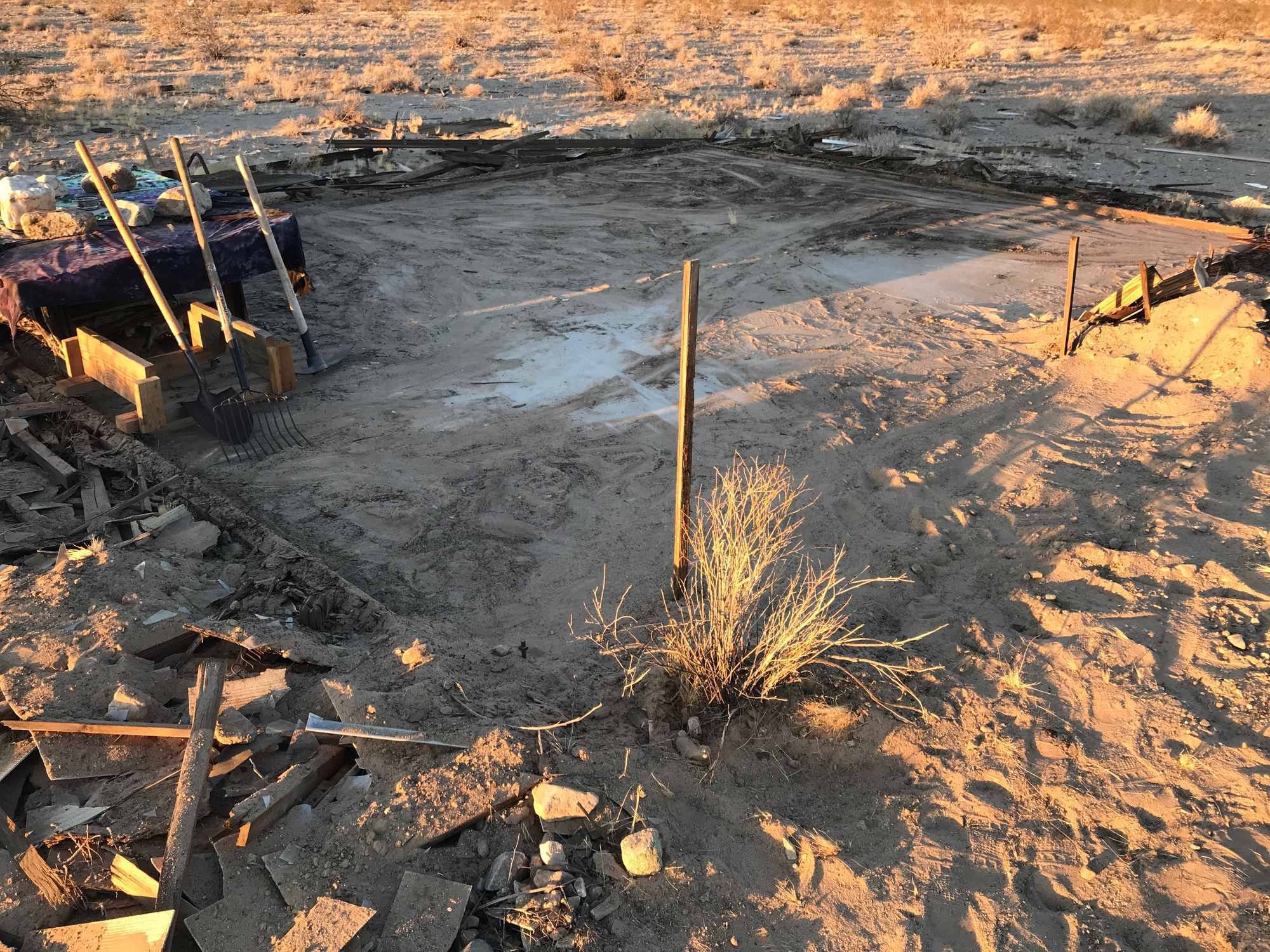






Day One: Clearing the Cement Pad for the Desert Bonsai Food Forest Garden Dome
The epic story of how and why I bought the land that I did will be told another time, for now, starting with the first day of occupation , my work was cut out for me. First off, I had to do a some basic land navigation and map work to identify the site. Once positively identified, I had to determine the best route to the base camp which was the site of the ruins of the old house that was built long ago and had long since been crushed and maimed by the elements.
With only a two-wheel drive truck at the time, I was white knuckling to dig and serve out of deep sand traps, looking for patches of dry stream beds and stone wash-outs to keep traction. Luckily I made it all the way in one high revved trek. It was an amazing feeling to be finally posted up.
I came with about a 2 week supply of water though several months worth of food. The opposite of an optimal ratio, this critical imbalanced had to be addressed as quickly as possible. But security is perhaps the highest survival priority.
I decided that after some surveying, clean up, and security measure, I’d then go back to civilization on a supply run to not only fill my water supplies but add much more storage tank volume to give me more time to design and build in isolation.
The first day’s project was to clear the cement pad of the remnants of the collapsed house. Luckily most of the house had literally blown away and was scattered around about a quarter-mile radius. What was left was the rusted wire frames of some furniture, lots of glass, and the just a few of the fallen inward stick frame lumber pieces. It was mid March so I was able to get a full day of work in under the sun with no risk of heat exhaustion.
I basically just pushed what was on the pad evenly out into the pile of debris directly around it. The plan was to just secure the initial base camp so that the pad would be defensible zone against all human and non-human threats. The gnarled perimeter barricade of extremely hazardous wood, metal, and glass felt like an adequate deterrent. I had no idea who or what I might encounter, nor how I would be perceived by anyone taking notice of my sudden presence.
I had to assume the worst, but try to maintain a positive mental attitude. I felt safe enough to sleep at night, and be active during the day, though I resolved to reserve the schedule if I saw any indications of encroachment.
Again, most importantly, having the cement pad gave me tactical peace of mind. If I had to snap into recon mode, I could get kitted up, covered, and concealed without fear of serious injury to one or both legs from the risk of collapsing rodent tunnels. I’d already learned, luckily not too painfully, how dangerous just walking at a normal pace can be anywhere on this site. If full attention is not being paid to the most subtle texture difference of the sand beneath each carefully landed step, you can drop what feels like your full body weight straight into a hole thereby contorting the joints and alignment of the leg(s).
This can lead to all kinds of injuries, not to mention losing balance, and if carrying anything at all, let alone something heavy, or something hazardous, it’s even more nerve wracking. I soon learned to make reliable trails and stick to them. Even then, there’s no guarantee they haven’t been literally undermined since you last walked them, so it’s always a process of endless mindfulness, and painful reminders when ever there’s a lapse.
With that said, I was able to settle in without incident. No severe injuries, extreme or unmanageable animal encounters or attacks, and no zombie invasion. I felt free and safe enough to get to work designing and planning for the first phase of food systems. What soon came to be a geodesic dome, covered in hardware cloth as home to a bonsai food forest garden.